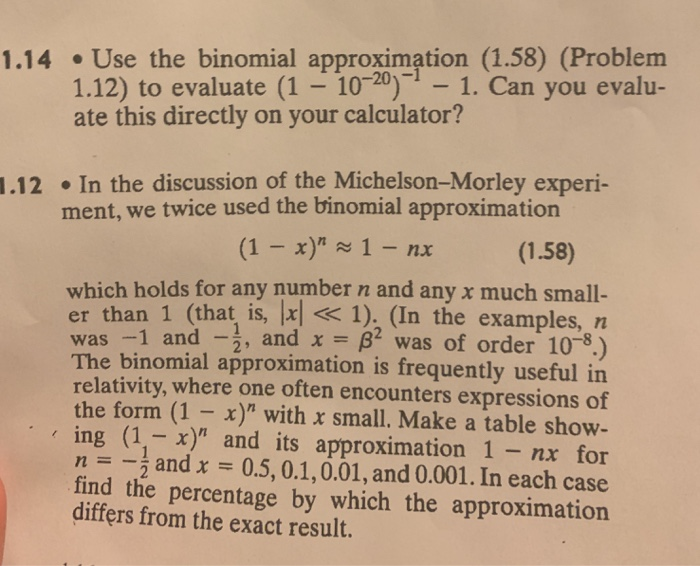Answered step by step
Verified Expert Solution
Question
1 Approved Answer
1.14. Use the binomial approximation (1.58) (Problem 1.12) to evaluate (1 10-20) 1. Can you evalu- ate this directly on your calculator? - 1.12.

1.14. Use the binomial approximation (1.58) (Problem 1.12) to evaluate (1 10-20) 1. Can you evalu- ate this directly on your calculator? - 1.12. In the discussion of the Michelson-Morley experi- ment, we twice used the binomial approximation (1 x) ~ 1 - nx (1.58) which holds for any number n and any x much small- er than 1 (that is, x < < 1). (In the examples, n was -1 and -2, and x = 32 was of order 10-8.) The binomial approximation is frequently useful in relativity, where one often encounters expressions of the form (1-x)" with x small. Make a table show- ing (1-x)" and its approximation 1 - nx for n = -and x = 0.5, 0.1, 0.01, and 0.001. In each case find the percentage by which the approximation differs from the exact result. "
Step by Step Solution
★★★★★
3.45 Rating (161 Votes )
There are 3 Steps involved in it
Step: 1
ab anban 1 10 nT Soo 11020 1 5 1 1020 152 1 11 3 2 102012 As ...
Get Instant Access to Expert-Tailored Solutions
See step-by-step solutions with expert insights and AI powered tools for academic success
Step: 2

Step: 3

Ace Your Homework with AI
Get the answers you need in no time with our AI-driven, step-by-step assistance
Get Started


